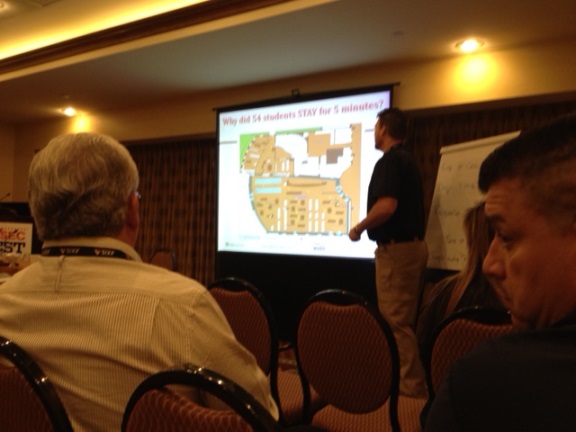When Facing an Active Shooter, Get Those Targets Moving
At GovSec West, speaker Shawn Slezak discussed the importance of the ALICE program and how correct training can keep students and faculty safe when an active shooter is on campus.
- By Lindsay Page
- Nov 21, 2013
As part of GovSec West’s Campus Security and Life Safety lineup, Moving Beyond Lockdown: An Overview of the ALICE Response Program to Active Shooter Event was presented by Shawn Slezak, a national trainer to public and private organizations across the nation.
During his speech, Slezak spoke about the difference in a police officer’s training and that of an active shooter. Simply put, law enforcement officers have tactical training, and active shooters do not. Statistics show that only 18-22 percent of all shots fired by officers are fatal, while 80 percent of shots fired by an active shooter end up claiming a life. How is that possible?
According to Slezak, cops have several things to consider before firing their weapon. They think about repercussions, worrying that an innocent bystander will somehow walk into the shot before the bullet makes it to their intended target, and hoping that whatever the outcome of firing their weapon that they will be able to deal with it. In other words, cops are distracted.

Active shooters do not have distractions, and Slezak mentioned that the shooters only have one thing on their mind: to kill. In most cases, campuses lock down their facilities. And during that lockdown, students are told to hide under desks or tables. If the shooter enters a room during this time, the targets are stagnant and the shooter doesn’t even have to take aim in order to fatally shoot someone.
This is where Slezak shows his irritation with the lockdown system. “Why are students told to stay in one place and wait for the shooter to show up?” he asked. “It doesn’t make sense, especially when there are young children on campus. An active shooter hasn’t been trained on shooting a moving object, so get those targets moving.”
According to research during Slezak’s presentation, the majority of students and faculty that didn’t wait for law enforcement to show up survived an active shooting because they took immediate action.
Here is a breakdown of the ALICE program:
ALERT: use plain and specific language when making a 911 call or alerting authorities about an active shooter on campus.
LOCKDOWN: barricade and prepare to evacuate, but do not waste time waiting for law enforcement to arrive.
INFORM: communicate the shooter’s whereabouts to help either officers pinpoint the location or to help students safely escape the facility.
COUNTER: this is a last resort, make noise and throw objects to distract the shooter in order to help others escape.
EVACUATE: break windows from the top corner, move to the rally point as quickly as possible and follow law enforcement commands.
A final point Slezak made was that a violent act can also make the difference between survival and death. Don’t be afraid to act out against the shooter; take a stand and fight for your life and the lives of others. In several past active shooter events, such as Sandy Hook, it took just one person to make a stand that saved several precious lives.
About the Author
Lindsay Page is the editor for Campus Security & Life Safety magazine, and the senior editor for Security Today.